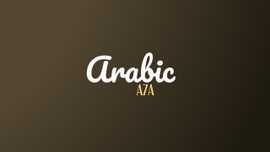
- Munster dialect
- High quality dialogue recordings
- Hundreds of Irish 'bitesize' lessons
- Recordings need to be sped up
- Dialect variation would be helpful
If you’re planning to learn Irish Gaeilge or looking for an online tool that explains everything clearly and succinctly, then Bitesize Irish Gaelic is excellent. It's currently the only course of its kind that teaches the Munster variety.
UPDATE: Check out this post for a comprehensive list of my best Irish resources.
I also highly recommend Glossika Irish (it teaches Connemara dialect). You can read my Glossika review here to understand how the method works for Irish.
Update: Bitesize Irish Gaelic is now offering an awesome 95% off for the first month of membership to readers of this site!
Just use the coupon code MEZZO at the checkout to take advantage of this generous offer. You can also try Bitesize out with no obligations for 14 days.
I was recently offered a complimentary membership for Bitesize Irish Gaelic, a handy online resource for learning the Irish language, and after finding it so damn useful I thought I’d slap together a quick review for anyone else looking for an inexpensive tool to help with their Gaeilge.
I make it my business to sample as many books and websites as possible so that I can offer recommendations to others who are in the same boat, fence-sitting on a decision to make a purchase or wondering which products are worth the time.
This one is worth the shell out for beginner learners.
What Bitesize Irish Gaelic is all about
Bitesize is a family business run by Eoin, a native Irish speaker and his wife Sasa, a Slovenian national who is herself a learner of Irish.
Despite my initial hesitation with the product due to it being partly run by a non-native, it occurred to me that the great clarity offered by Bitesize is largely due to Sasa’s learner perspective and input.
Like the rest of us adult learners of Irish, I’m sure she’s experienced the same challenging aspects of the language and all the poor explanations offered by so many other products, so it’s great to see that Bitesize employs her experience by explaining everything so well for the low-level learner.
Their mission is quite simple: to help you learn to speak Irish, and they attempt to do this by presenting 155 bite-size (very brief) lessons on grammar, vocab and conversation which all contain both written explanations and audio recordings.

In terms of the difficulty level it does begin with content aimed at the absolute beginner (how to say hello) and then works up to an upper elementary level with slightly more advanced features of grammar.
What I like about Bitesize Irish Gaelic
1. Simple, clear explanations
The main thing that I like about Bitesize is the way that it simplifies its explanations about many features of Irish, particularly where other sites and books aren’t as clear.
Take for example how to form one of the future tense conjugations:
When you see a verb ending in -faidh or -fidh, you are looking at something that is yet to happen… These endings are both pronounced: hig. This is the usual pronunciation in Munster, which is what you will hear here. In Ulster, they are pronounced hee.
As you can see it’s simple, it doesn’t go into too much detail and it provides just enough information at this early stage for the learner to get enough of a general grasp to use it in a conversation or recognize it in writing.
Thanks to brief explanations like this I was personally able to go back and clarify certain aspects of the language that I’d previously been unsure about.
2. It doesn’t leave you guessing about the pronunciations
Just about every word and phrase that Bitesize covers has a little audio play button so you can hear how it sounds (Munster dialect), as well as an English transliteration for extra help.
For example:
Irish is one of those languages that takes a lot of time getting used to the spelling and pronunciation so this an excellent feature to have to avoid any confusion or mispronunciation.
3. Cheap as chips
Between $15-$35 a month (depending on membership type) and no contract.
For a quality paid product, it doesn’t get much better than that.
4. Plenty of useful content
Having 155 lessons means that there’s plenty of useful vocabulary and expressions even as a later reference.
Take for example lesson 120 – In the countryside – which contains a list of vocab related to nature, flora and fauna along with a handful of relevant conversational phrases. I might not need to talk about waterfalls and schrubs right now, but it’s a reference point for me to come back to later when I do.
Being so well organized and structured it serves as a good grammar reference as well if I’m ever unsure about anything.
Where I think Bitesize Irish Gaelic needs to improve
1. The audio is far too slow
NOTE: Since writing this review, Bitesize Irish Gaelic has fixed this issue! The audio is now brilliant. 🙂
This is a problem that many language learning resources have:
In… real… life… nobody… talks… like… this…
When people talk naturally sounds get assimilated, deleted, doubled, etc. Words are strung together and spoken very quickly so it’s important that learners are exposed to natural speech from day one so they can begin to train their ears to recognize the sounds in the target language.
Colloquial Irish and Turas Teanga are two excellent examples of this.
My advice to Eoin would be to speak the phrase once slowly then a second time as it would sound in a normal conversation.
2. Plenty of vocabulary and grammar but needs more conversation
NOTE: This problem has been fixed as well! The content includes a lot more useful conversation now. 🙂
Most of the lessons between 1 and 11 are conversation lessons but then the next one isn’t until lesson 63.
Despite this huge gap, there are plenty of useful phrases throughout the vocab and grammar lessons but in my opinion Bitesize would really benefit by having more of a practical, conversational focus.
There’s no better way to learn vocabulary than in context.
3. No tests or quizzes
This is not a major issue but since these are sequential lessons that are marked as finished it would be a nice touch to periodically quiz the learner on what they’ve covered so far. A small test can be really helpful in assessing whether or not you can actually recall what you’ve covered.
4. Further suggestions
Here are a few other suggestions that might help improve Bitesize Irish Gaelic:
- There seems to be quite a few people using Bitesize so a forum or chat window to help learners connect with each other and practice would be excellent.
- Perhaps Eoin and Sasa are already planning this, but it would great to have some additional lessons with higher level conversational content. (Since writing this review, this has been done! Great job, Eoin :))
- The inclusion of video of dialogue with native speakers (interviews, etc.) for those like myself who learn better visually.
An excellent tool for new learners of Irish
If you’re planning to learn Irish Gaeilge or looking for an online tool that explains everything clearly and succinctly, then Bitesize Irish Gaelic is something I highly recommend you try. They also have a free trial so you can see what you think.
If you’ve used Bitesize Irish Gaelic yourself then let us know what you think of it in the comment section below.
I also highly recommend these books in addition to Bitesize (all of which I now own and use myself):
Gaeilge Gan Stró (the best book series available for Irish that I’ve ever seen)
Colloquial Irish (for scripted dialogue this is probably the best in terms of it being naturally spoken)
Turas Teanga – A New Multimedia Course For Learning Irish
Speaking Irish – An Ghaeilge Bheo (superb multi-dialect interviews)
🎓 Cite article
 Grab the link to this article
Grab the link to this article








































7 COMMENTS
NO ADVERTISING. Links will be automatically flagged for moderation.
Samantha
Very helpful review. I was trying to decide whether to try Bitesize Gaelic and your review has made me think it’s a good idea. I’m especially impressed that Eoin responded so quickly to some of your suggestions, which were quite good. Thanks so much. Perhaps my next comment here will be in Irish.
Eoin Bitesize
As an update to people reading this - we’ve followed Donovan’s suggestion on fast+slow recordings.
Donovan, go raibh maith agat, a chara.
Caron
What an informative review! I enjoy Bitesize Irish Gaelic, recommend it all the time and use it in our study group. I’m on board with any further work Eoin and Sasa put into it because as you say, it is already a high-quality products and can only get better!
Eoin Bitesize
We should talk about lesson worksheets/quizzes ;)
Eoin Bitesize
Donovan, a chara, such kind words. I’m glad you’re liking your time on Bitesize Irish Gaelic.
Most importantly for me is what you have suggested as improvements. Great insights.
That’s good insight about fast+slow recordings. Yes, they are unnaturally slow so that the learner can catch the sounds. A great example of how “go raibh maith agat” (thank you) strings into something like “gurra-mah-gut” (depending on dialect). We had heard before about how some recordings were too slow.
Thanks for the suggestion for more conversation lessons. He had not heard that suggestion before, while the conversational lessons are quite new to Bitesize Irish Gaelic. New lessons are always being added, so we’ll look into this as a possibility.
Quizzes: have been requested many times, and it’s something we still have to crack.
For chatting and video, this is a big area that Irish learners miss out on, I think. We held a Google+ Hangout earlier in the year. That was a really nice chance to get to meet some members, and it would be an opportunity to learn some Irish. Yet another thing we need to crack.
PatK
I agree with your review--this is an excellent resource for a beginning Irish speaker.
Jared Romey
Donovan,
You make a good point at the beginning about how Sasa being a non-native Gaelic speaker may be a benefit. I completely agree. When I am asked how I identify many of the local language differences in Spanish that native speakers do not hear, my answer is similar. I have the benefit of looking on the language from the outside. It makes it easier for me to identify the differences. This is the opposite of what most people expect.